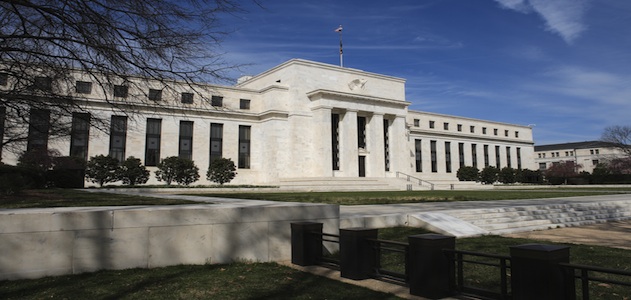Minutes from the Federal Reserve’s most recent Federal Open Market Committee meeting suggest key monetary policymakers spent their last gathering pulled in different directions, whipsawed back and forth between the reality of employment growth and the expectations of investors.
Still, at the time, most members thought tapering would end by the close of 2013.
"Most Fed officials still expected to begin tapering before year end and to halt it completely by mid-2014," analysts with Capital Economics said. However, economic data weakened leading up to the meeting, changing the mood a bit.
The minutes, which are from the Sept. 17-18, show a clear divide between FOMC members. A dominant majority decided not to taper the Fed’s monthly purchases of mortgage-backed securities and Treasurys after experiencing months of rising mortgage rates and a general slowing in the housing economy as the market inched toward expectations of a Fed tapering in September.
The housing market's stall combined with improving – but hardly impressive – employment data prompted Fed officials to delay tapering once again. But the full board was not in agreement.
As always some members opposed the FOMC’s decision not to announce some tapering of asset purchases. Other members pushed for a small tapering on the grounds that a failure to taper in September could send a message of pessimism to a market already anticipating some pullback in quantitative easing.
Another FOMC subgroup supported limited tapering, with the recommendation that the Fed carve back Treasury purchases first.
It’s clear when reviewing the minutes that rising mortgage rates over the summer spooked FOMC members, causing them to turn cold on their QE clawback plans.
"Several participants judged that overall financial conditions had tightened notably over the past few months, as seen most importantly in the rise in mortgage rates," the FOMC minutes stated. "While acknowledging that it was too early to assess the effects of such an increase, they expressed concerns that tighter financial conditions might weigh on the recovery in the housing sector."
Other members of the FOMC pointed to higher equity prices and loosening lending standards as signs of improving financial conditions and justification for some tapering.
Housing remained a top concern, with the Fed cognizant of how MBS tapering could impact the overall housing sector.
Some members expressed concern that "an announcement of a reduction in asset purchases at this meeting might trigger an additional, unwarranted tightening of financial conditions, perhaps because markets would read such an announcement as signaling the committee's willingness, notwithstanding mixed recent data, to take an initial step toward exit from its highly accommodative policy."
The minutes also show a Fed fretting over how its communications play out in public.
"With many outside observers expecting a decision to reduce purchases at this meeting, some participants emphasized a need to clearly communicate the rationale behind any decision not to do so, in order to avoid conveying a message of pessimism regarding the economic outlook or to reinforce the distinction between decisions concerning the pace of purchases and those concerning the federal funds rate," the minutes stated.




